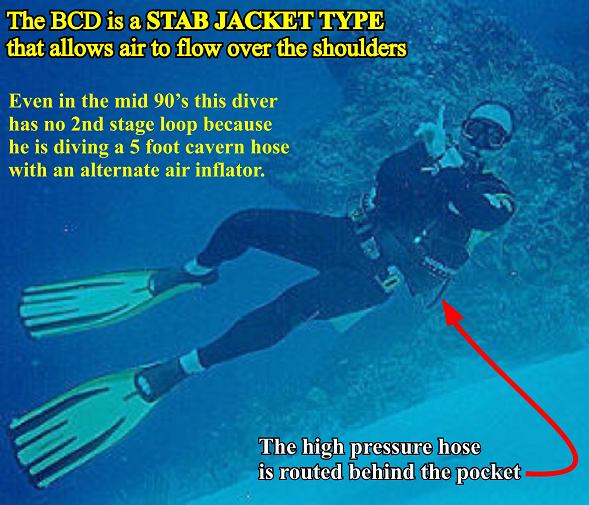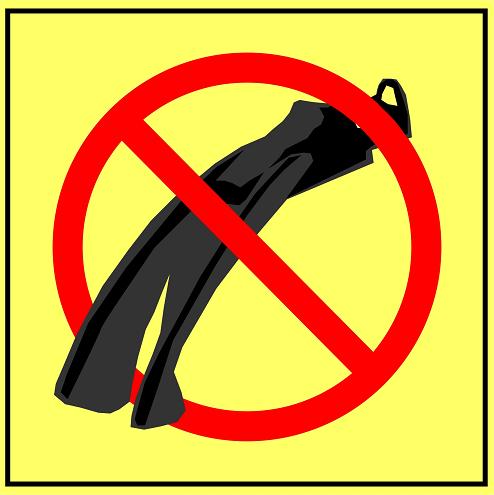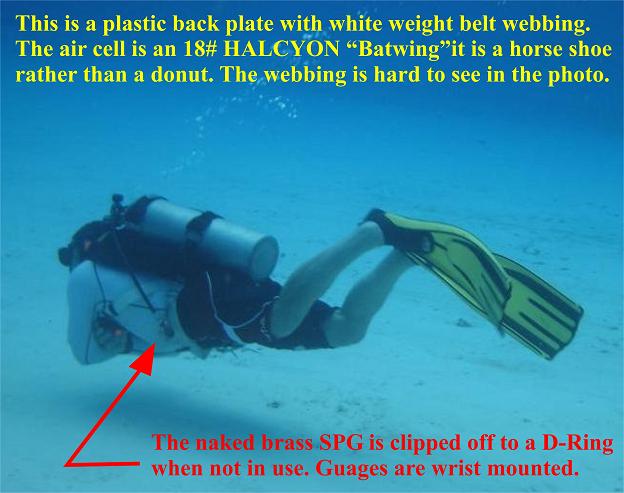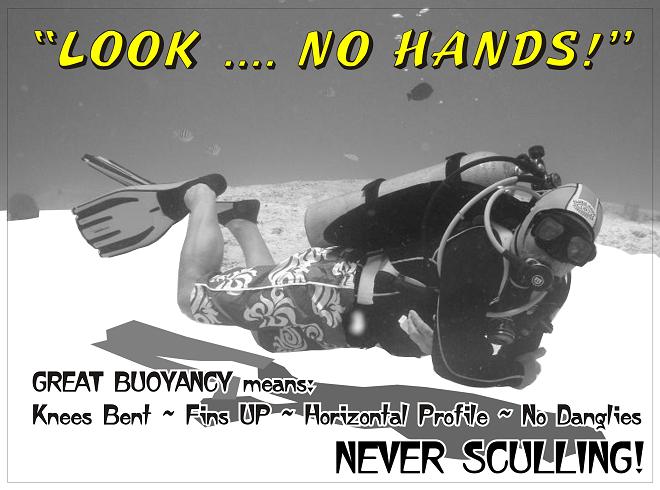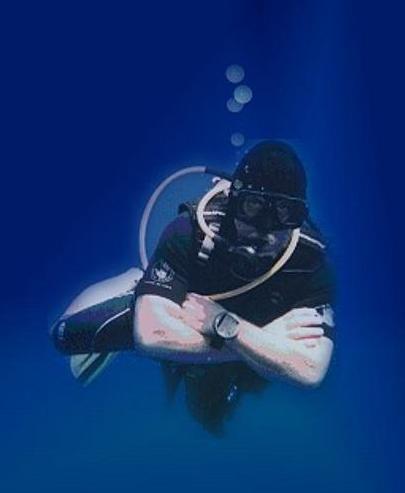 SAFETY STOP PUNTA SUR photo: maureen miller
|
 EQUIPMENT CONSIDERATIONS....page #1 |
| No performance requirement in SCUBA Diving is more poorly defined or less often achieved....than Buoyancy Control Skills. |
|
DO YOU REALLY LOOK AS GOOD UNDERWATER AS YOU LOOK ON PAPER OR PLASTIC?
|
| ARE YOU THE DIVER THAT ANYONE ELSE WOULD LIKE TO BE? |
|
WE BELIEVE THAT WHAT KIND OF DIVER YOU ARE IS ABOUT YOUR EQUIPMENT....
"only" when you have stuff hanging everywhere....aka "DANGLIES!"
IF you insist on keeping that big ugly console; OK....but here's an idea:
Always
hold it with your left hand, close to your torso. Fold your right arm
over it and even gather other items such as your inflator hose and hold
them close also. You'll be killing many birds here because now you
can't use your hands for SCULLING so your will begin to learn more
skills with your fins and breathing. AND you won't have any
"danglies" either. AND you'll always be able to find your guages quickly if you want to look at them.
|
|
"SCUBA HOSE
HALOS"
We
never heard anyone use this term before we did so perhaps we coined a
phrase....who knows? We called them that because they dominate
most dive magazine photos. They are "ugly" and the big ones, and some
are truly enormous, are big enough to enlarge a divers girth by 50% or more.
When you look at divers who have halos you will instantly see how we
came to call them by that name. We're pretty sure there's no way to own
the term "hose halos" and we expect to see others pick it up
and make it a part of SCUBA Diving jargon. JUST DON'T ADOPT THEM
as part of your equipment configuration! |
